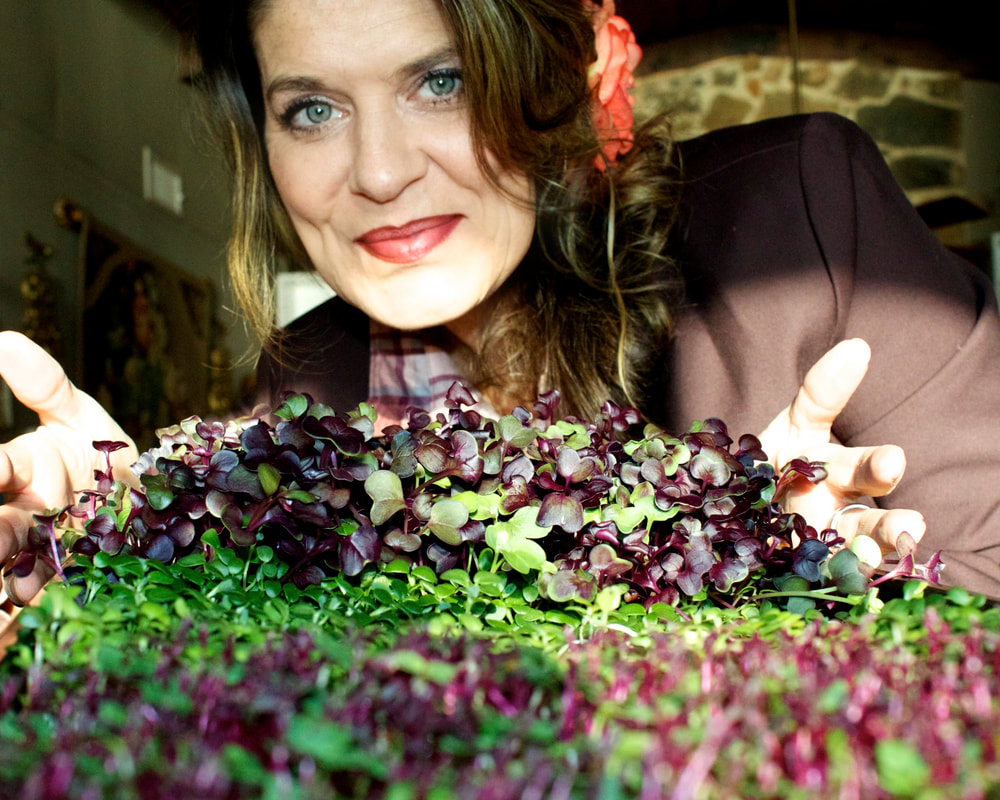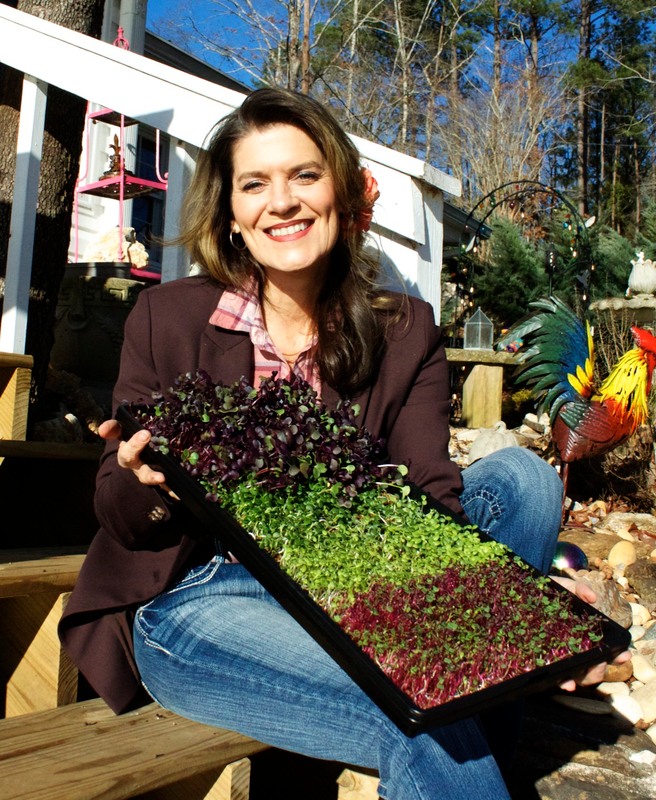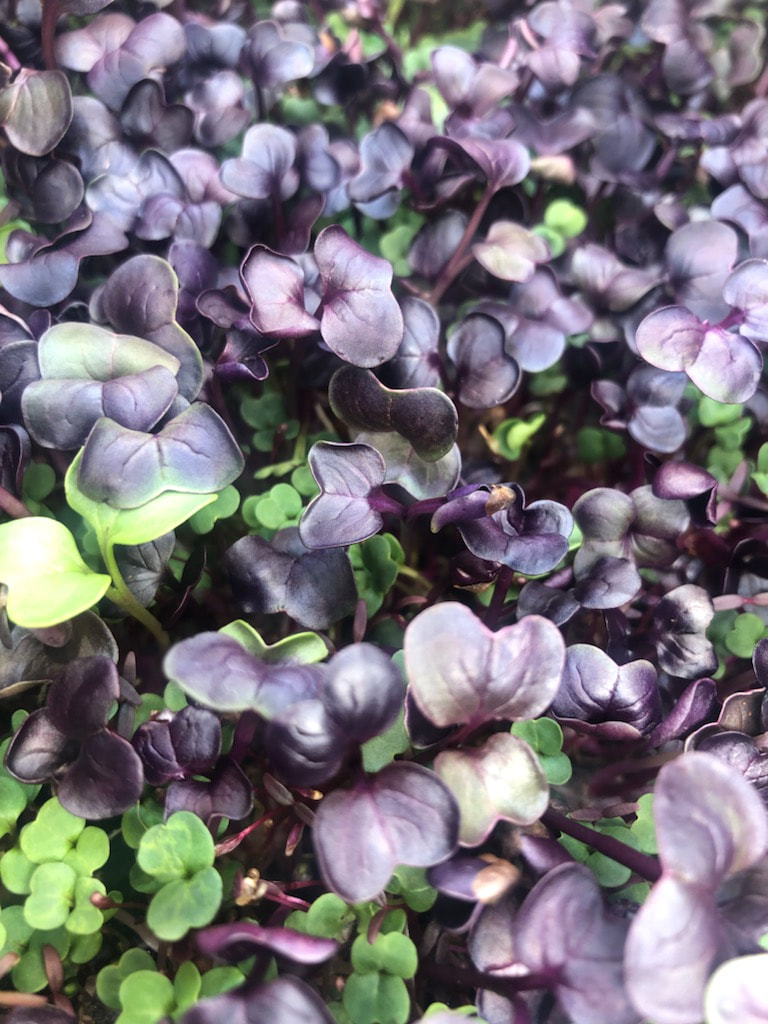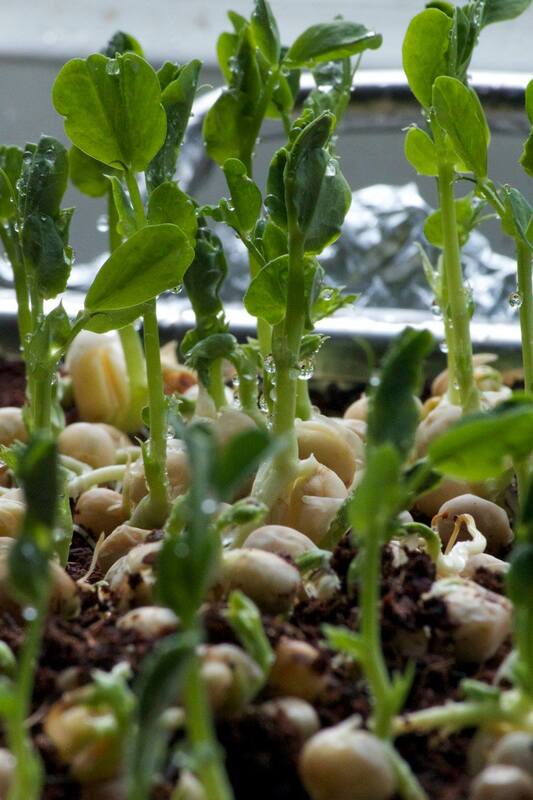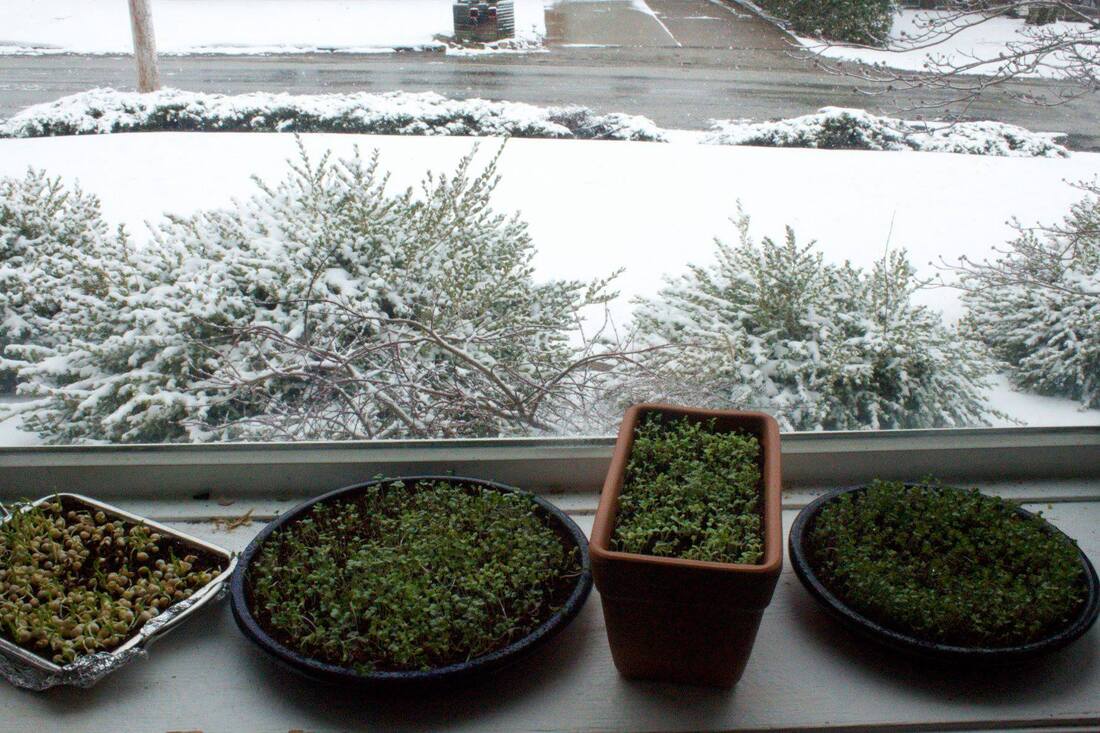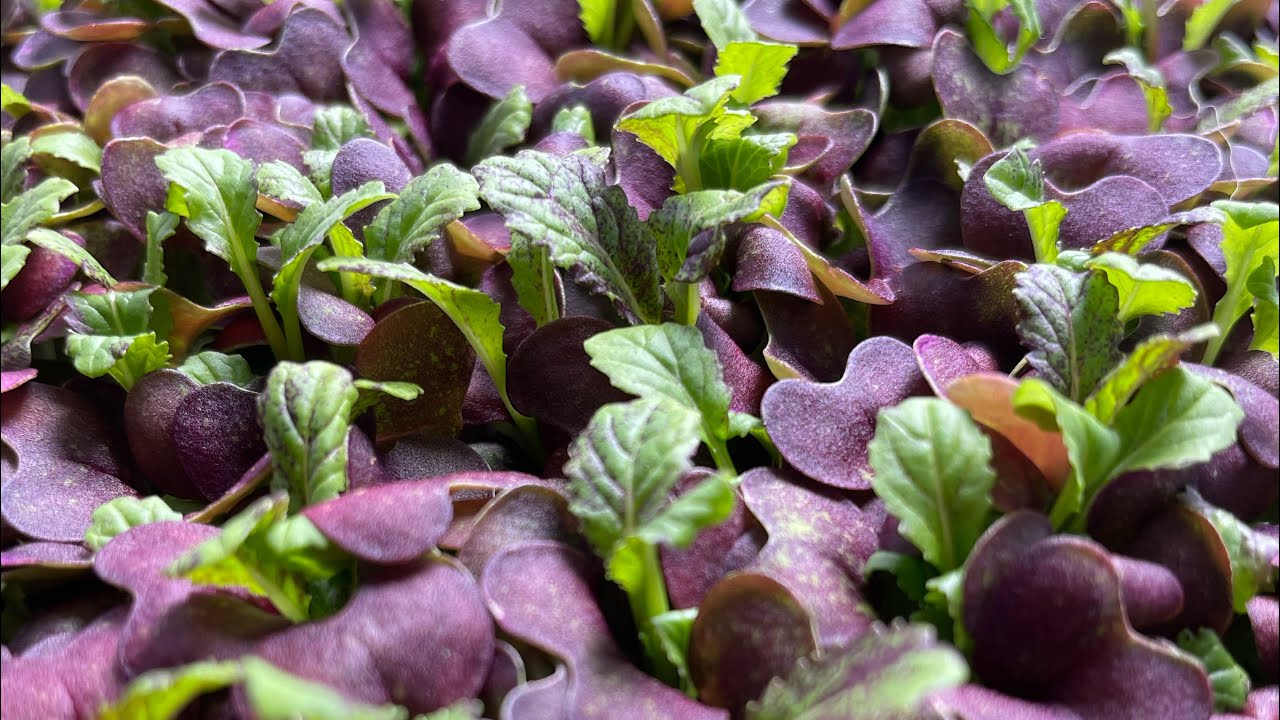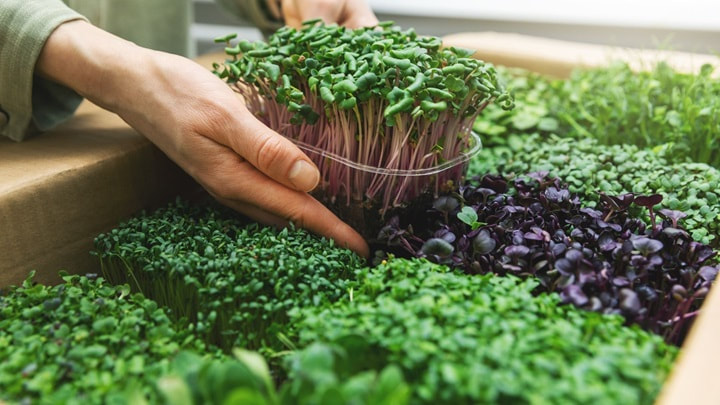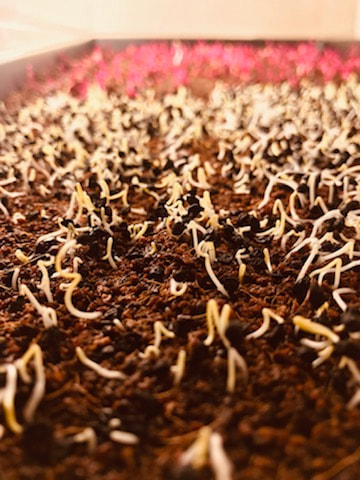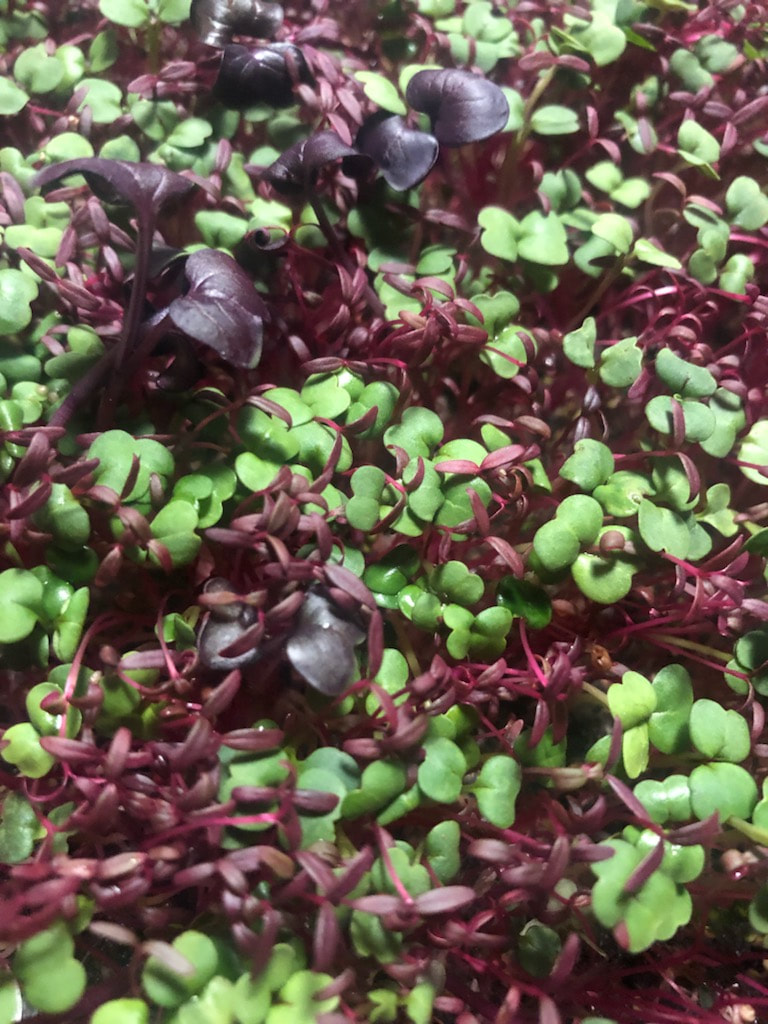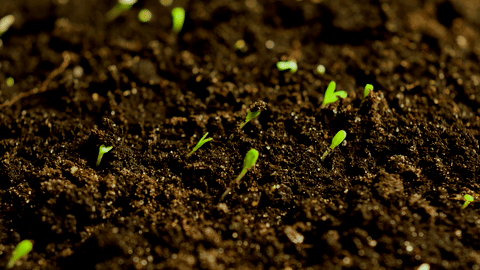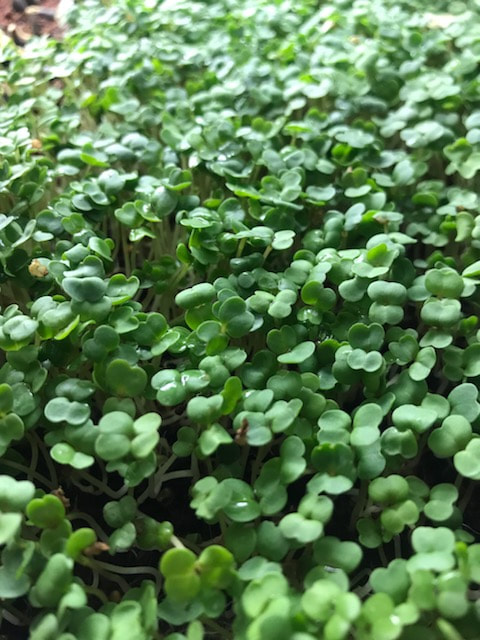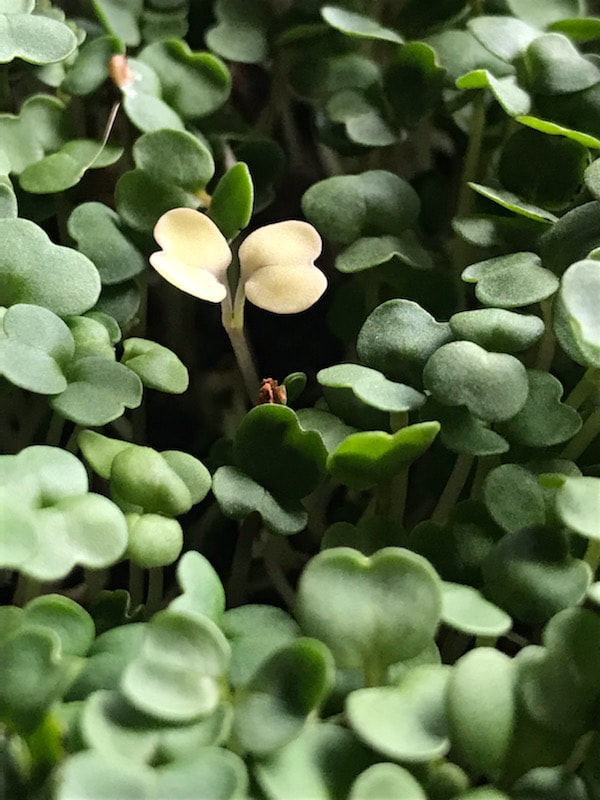|
House Specials
|
Staple Micros
|
more below about micro-greens & NutritionNOTE:
Micro-greens are to be consumed as part of a whole balanced diet. Please seek the advice of a licensed nutritionist or physician for guidance regarding the best diet type for you. The information provided here about micro-greens, is for general information purposes only. It is not intended to replace medical advice nor is the information intended to be all inclusive. |
Did You Know?Often times the words "sprouts" and "micro-greens" are interchanged. However, they are in fact two distinct terms [Gioia 2017].

Sprouts are the physical structures that grow from a seed during the process of germination.
This process includes the seed cracking open and sending out shoots that become either the roots or the main plant stalk [see technical terms in the model shown below]. The tiny leaf-like structures that first appear from the seedling are really NOT leaves. They are called cotyledon. Cotyledons function to supply the nutrition that the little seedling needs to grow its first true leaves [Shi 2020]. An example of a cotyledons is shown in the image above with the seed coat still attached. 
Referring again to the model, after the seed germinates the sprout continues to grows the first true leaves.
The arrival of the true leaves is where the term "micro-green" comes into the picture. In terms of seed development, the term micro-green does not apply. It is a term that growers use to describe what they are growing versus a sprout or full grown vegetable. Once the first true leaves appear the micro-green is able to produce its own energy thorough a biological process called photosynthesis. The type of micro-green being grown determines how long the true leaves are left to mature before harvesting. |
Rockford Micro-green SeedsWe source our seeds from reputable suppliers that provide non-GMO, non-chemically treated seeds. Also, because soils can contain elements that could impact the health and quality of the greens, we do not use mass produced garden soils for growing.
It is our goal to provide quality produce that is grown using 100% natural methods. We take much pride in our growing and infuse our micro-greens with love and care. Here's to many happy, healthy meals! |
Did You Know? Micro-Greens & Nutrition
When it comes to nutrition, foods eaten by humans range from totally processed food products that are high in fat, salt, and sugar to all natural, raw whole foods. For the most part it is easy to tell healthy food items from the not so healthy. |

However, when considering fresh foods the nutrition value is not always obvious. Some varieties provide more vitamins, minerals, and fiber than others. As an example, veggies like corn, iceberg lettuce, or celery do not provide as much nutrition as others such as carrots, spinach, or broccoli. One way to gain more nutrients in your daily diet is the incorporation of micro-greens. While the exact nutrient contents varies across the types of micro-greens, most varieties tend to be rich in vitamins and minerals such as iron, potassium, magnesium, zinc and copper. Researchers have shown that both sprouted seeds and micro-greens tend to be more nutrient-dense than the adult plant and ungerminated [Ebert 2022]. Micro-greens are also rich in natural antioxidants that are widely distributed in various plants. Antioxidants, especially polyphenols and carotenoids, exhibit a wide range of biological effects, including anti-inflammatory, anti-aging, anti-atherosclerosis and anticancer [Xu, Li 2017]. |
DId you Know?

Various mutations in plant chlorophyll have been officially noted as early as 1868. Charles Darwin classified ‘the spontaneous mutations according to the plant part in which they appeared. He also noted that many were found in types of variegation. Variegation mutants are defined as ‘any plant that develops patches of different colors in its vegetative parts’ [Yu 2007]. All along at Pato Point Farm L.L.C., we get to see the dynamics of nature first hand. Shown in the image is a yellow-mutation found in an arugula seedling. Some of these mutations are called viable-yellow mutants, capable of surviving with decreased photosynthesis. Others can be lethal-yellow mutant. These seedlings die shortly after germination as the first leaves have no mean of photosynthesis. Meaning, they cannot produce their own food using sunlight particles called photons. |
In images: Shown above, a yellow-gene mutation found in an arugula seedling, still thriving. Grown at Pato Point Farm L.L.C., December 19, 2022. The seedling is shown in image to the left-below after being transplanted, allowing it to mature.
|



